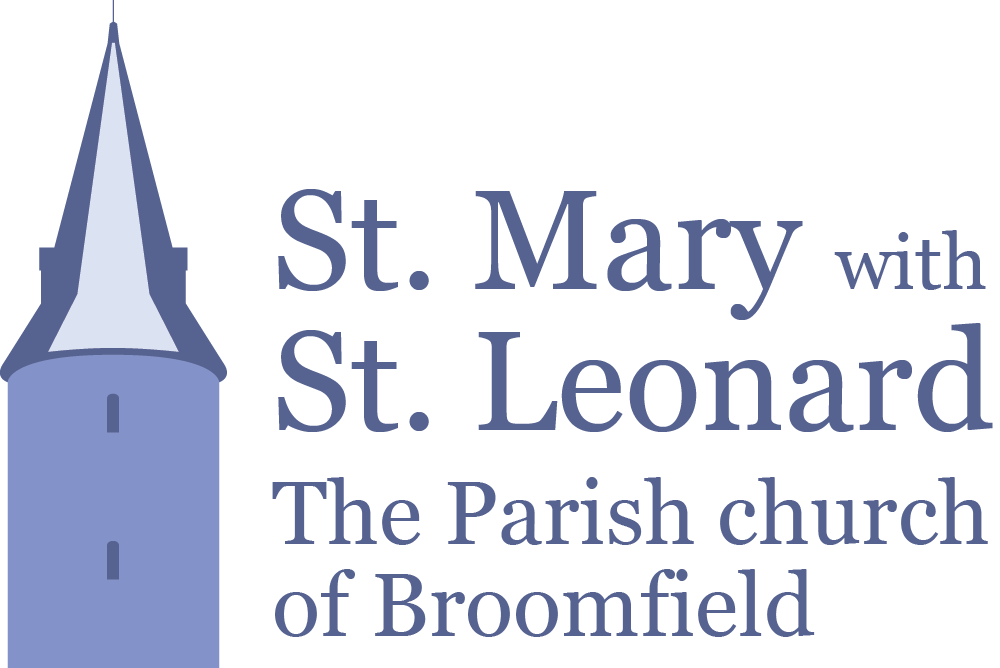To fulfil the learning element of the conditions of the Heritage Lottery Fund Grant, much research was undertaken.
The exhibition and publications team included a member of Rosemary’s family. We visited churches, exhibitions and museums where her works are kept and we researched into local history and into the techniques Rosemary used in the creation of the fresco and stained glass.
We are immensely grateful to Rosemary’s niece, Jenny Weston, and great-niece, Naomi Courtenay-Luck, for so generously providing direct insights into Rosemary’s life as well as many of the images she created.
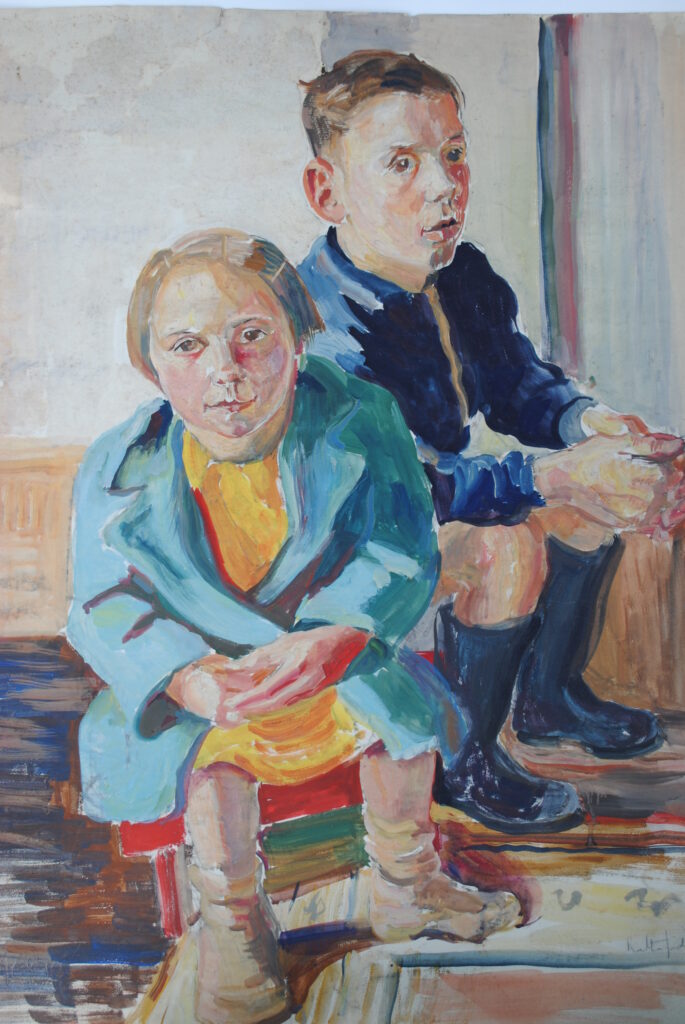
Evacuee children from Tottenham (Chelmsford City Museum).
Curators and researchers at various museums and galleries have been most helpful in providing access to collections in their stores. Visits to museums where collections of her works are held were made – Imperial War Museum Lambeth, National Maritime Museum Greenwich which holds a large portfolio of her war art, First Sight Gallery in Colchester which included two of her works in an exhibition of works of East Anglian artists and Chelmsford City Museum which purchased two of her paintings of evacuee children.
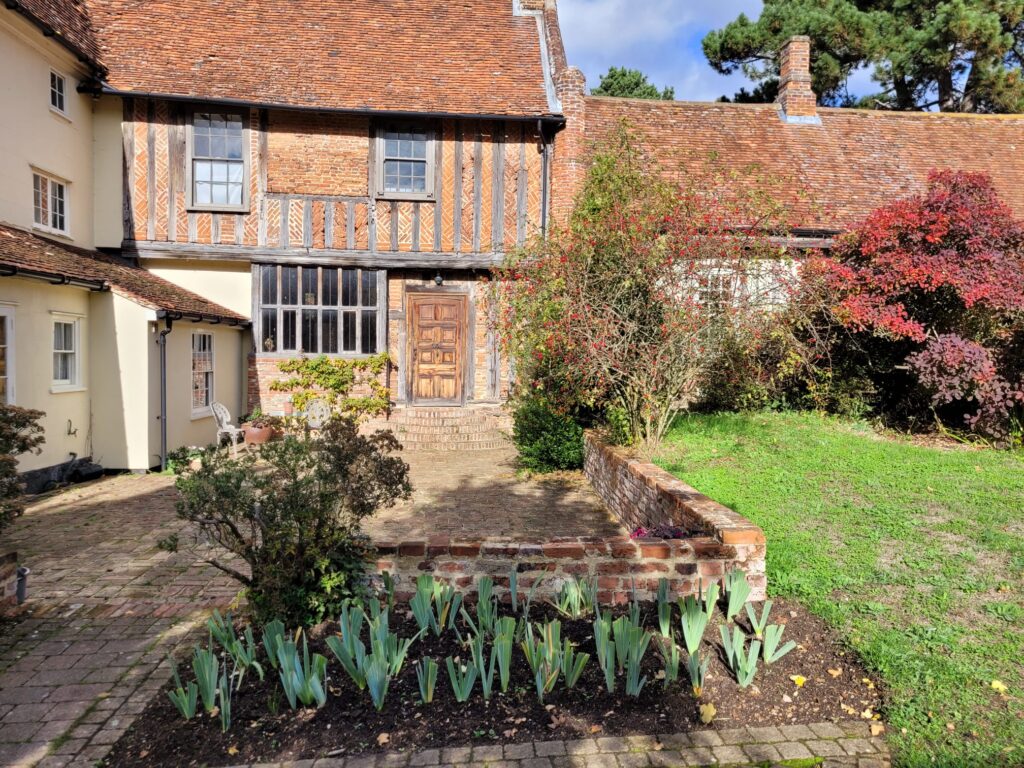
Benton End, near Hadleigh, Suffolk.
We are grateful to the staff at Benton End, near Hadleigh, which housed the East Anglian School of Painting and Drawing. Rosemary visited regularly in 1950s and 60s, gaining much inspiration from the incumbents Cedric Morris and Arthur Lett-Haines. The staff also offered access to the premises and gardens there, providing further background to her artistic life.
Visits were made and experts consulted to obtain insight into the techniques used by Rosemary to create the fresco and stained glass windows. Tobit Curteis Associates, who had previously conserved the fresco, provided background information in their report of this work. Accounts written by Rosemary’s brother Alton, gave further details of its making; using this information we commissioned a local sculptor to make a layered mock up for the display. Visits were made to a local stained glass window craftsman who remembered meeting Rosemary’s brother and who showed us hands-on how leaded stained glass is constructed and provided materials for the display. A slab glass expert visited us and provided tooled glass fragments for the creation of the display of the dalle de verre technique that Rosemary also used.
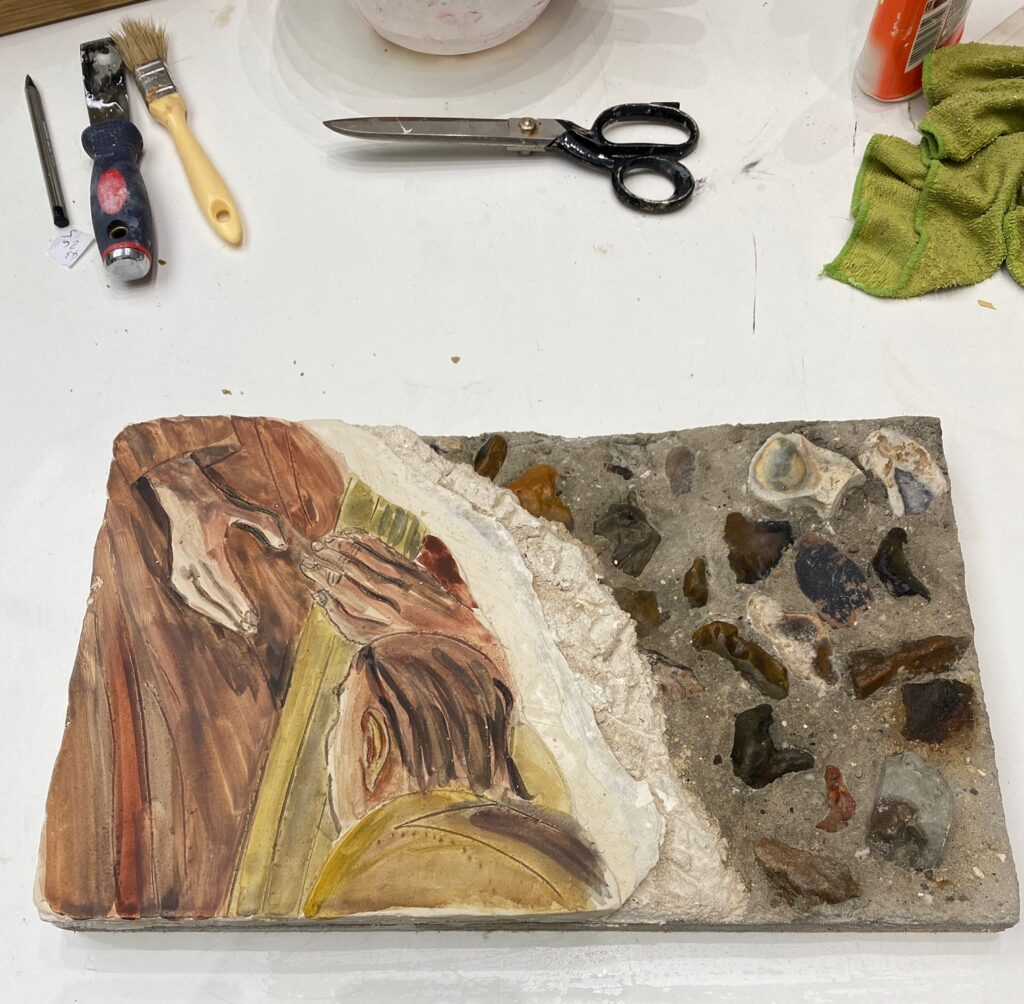
A model reconstruction of part of the fresco was made for the exhibition. This reveals the method used by Rosemary to create the unique fresco in the tower.
A local resident who remembered working at the vicarage when Rosemary was there recounted her memories in a recorded interview. Other resources at the Essex Record Office have been studied to provide more background into wartime Broomfield in order to appreciate more fully the scenes painted by Rosemary.
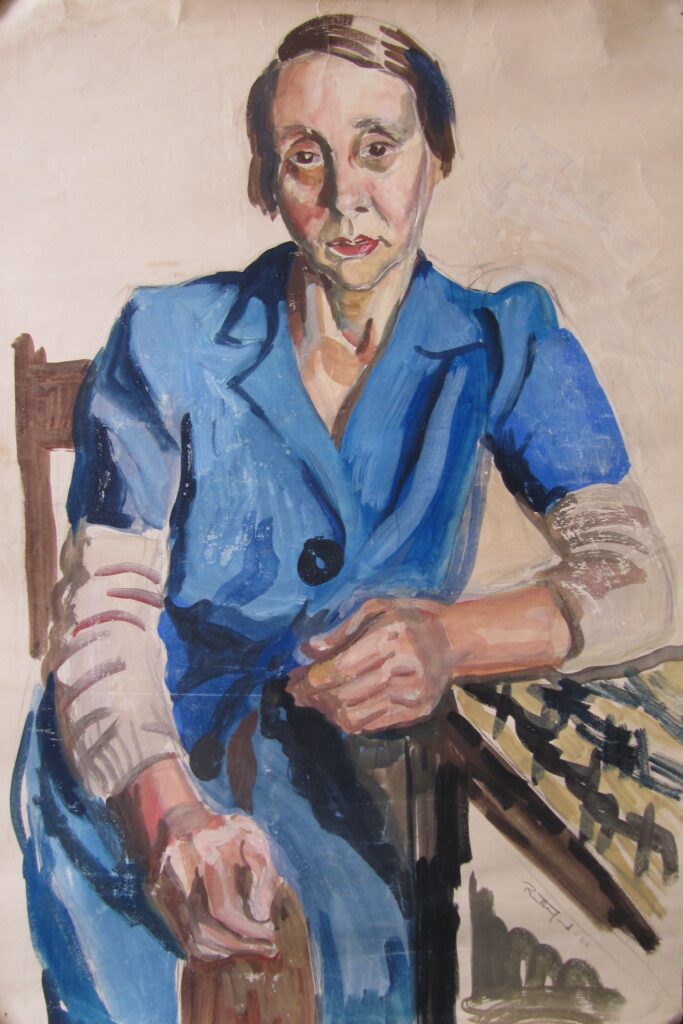
Mrs Gladwin, mother of local resident who worked at the vicarage.
Four pews were removed from the rear of the north aisle of the church to accommodate the exhibition. These were sold to local people and to Channels Wedding Venue to provide more funds for the project. A ramp was built to give wheeled access to the area. The display elements were designed and constructed by a local craftsman who worked at the British Museum. The exhibition content was brought together from the work of the research team by people with extensive museum display and teaching experience and this was enhanced and made print ready by an experienced graphic designer. Printing was done by a local company who engaged most fully with the project.
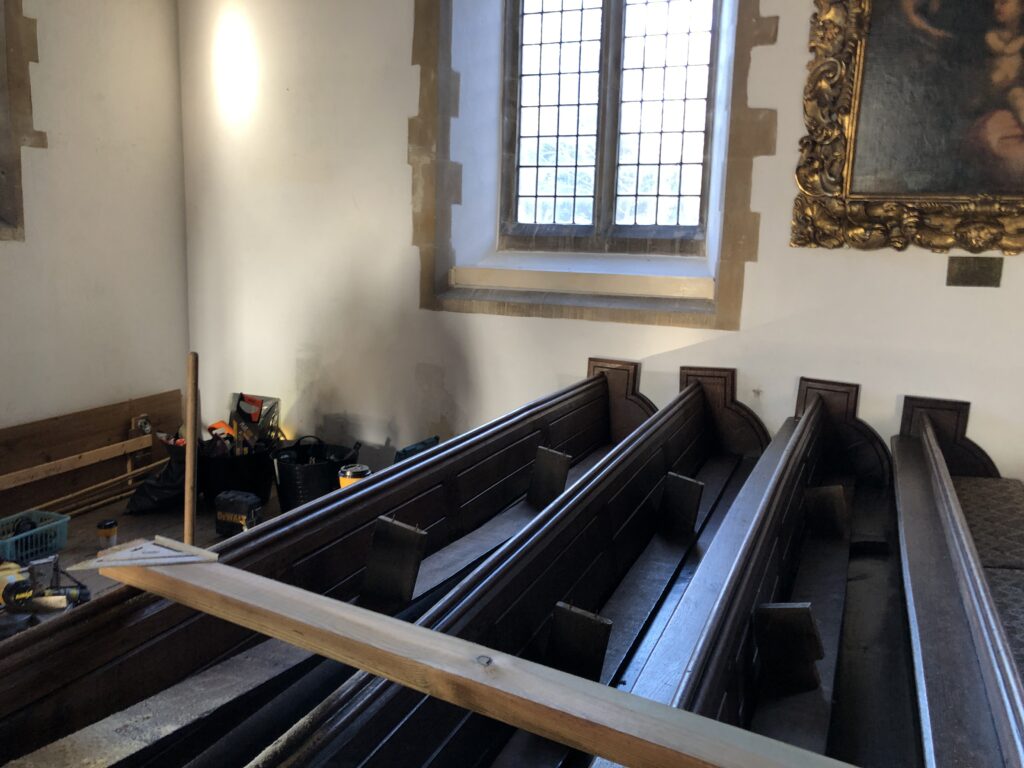
The exhibition site, western end of the north aisle.
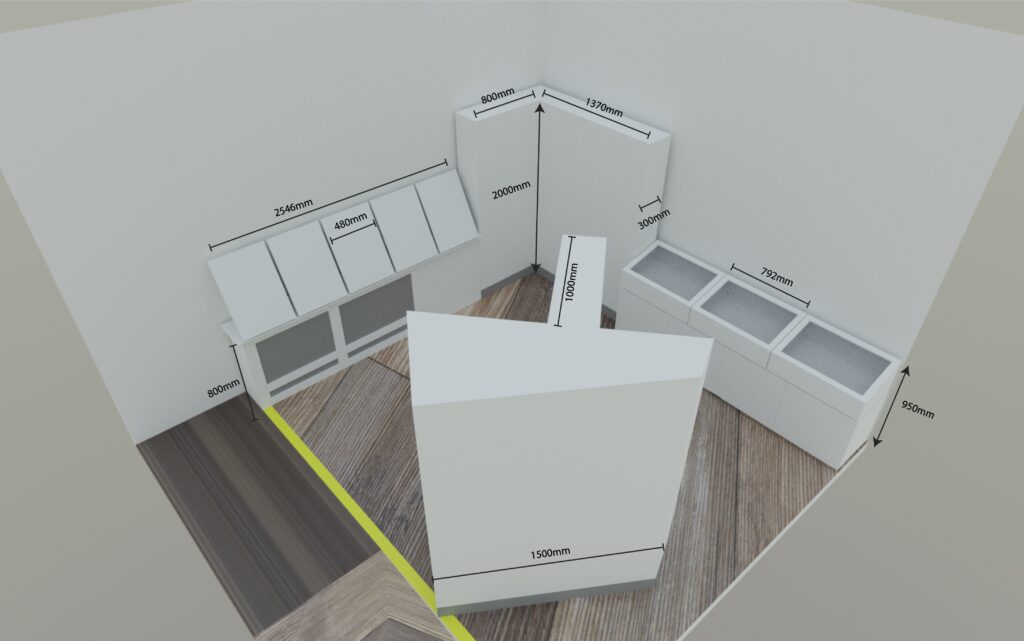
Initial design January 2023
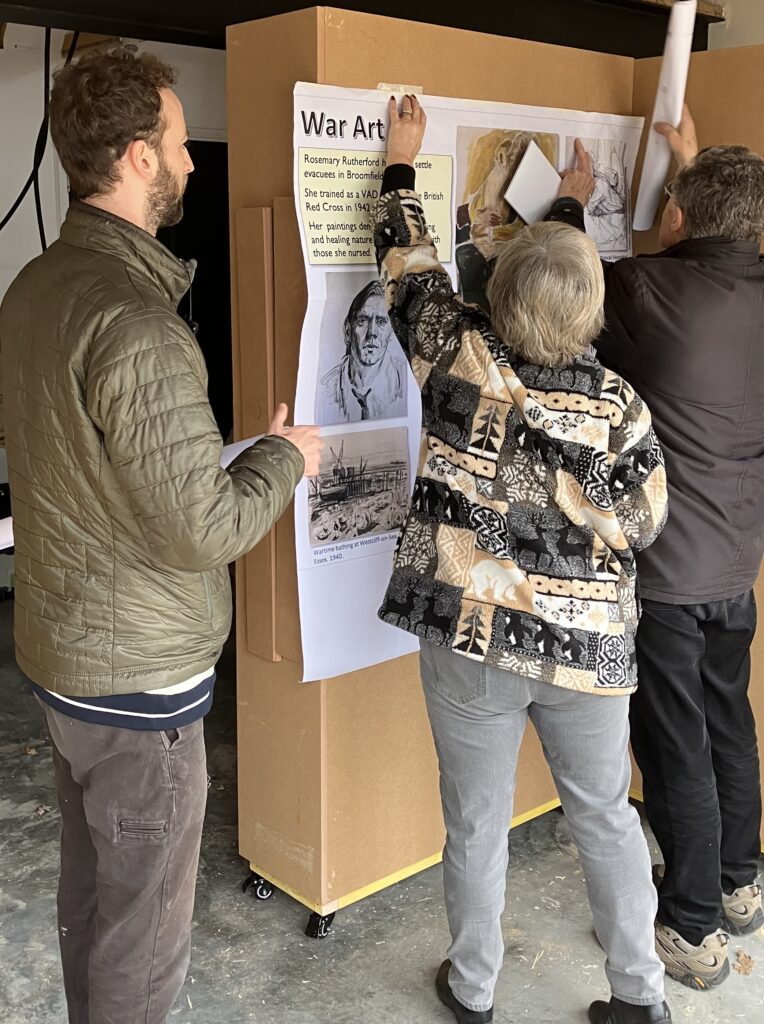
Progress with building and layouts
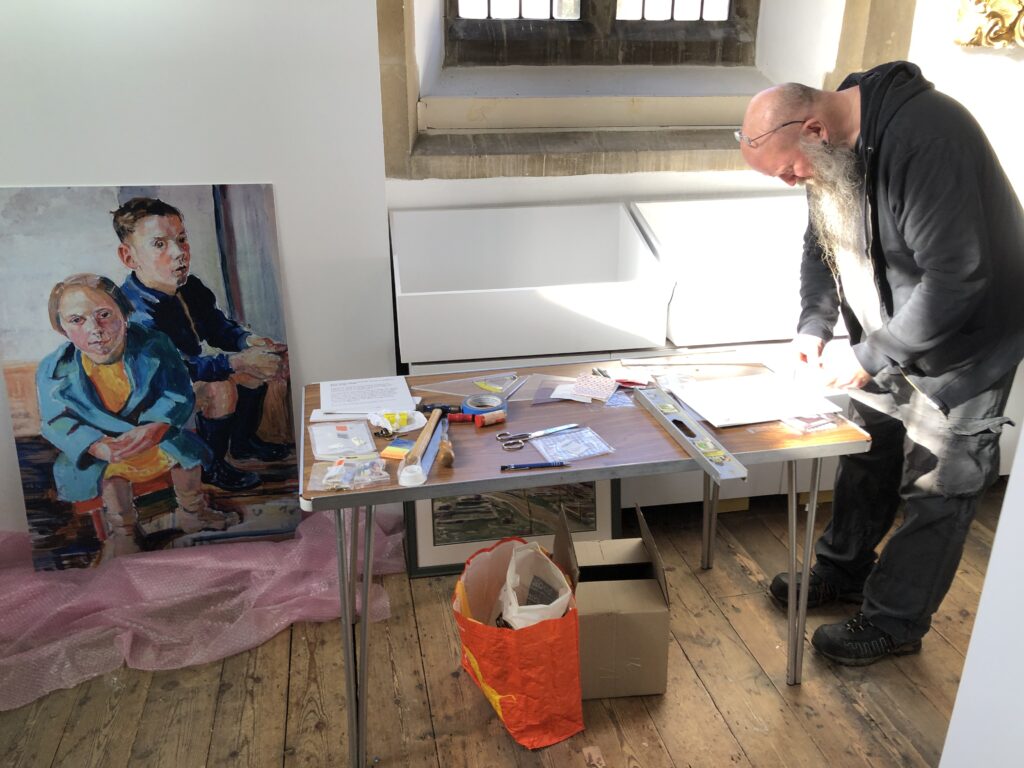
Progress with mounting, March 2023.
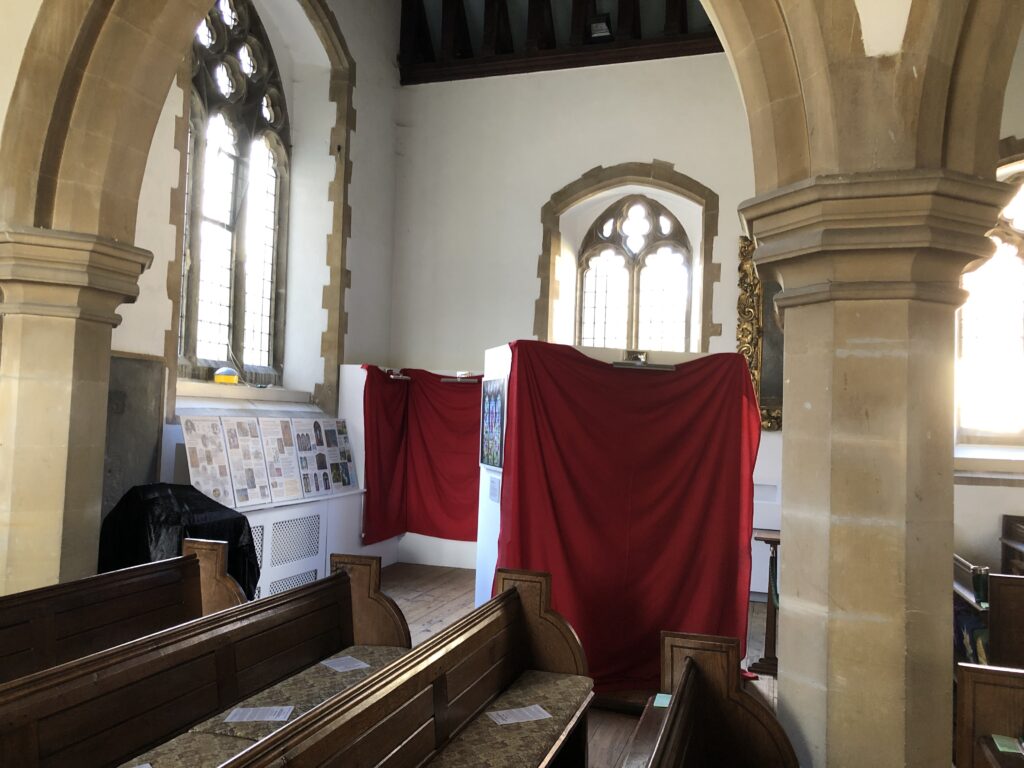
Due for opening…
The exhibition was opened on Saturday 25th March 2023 by Rosemary’s niece, Jenny, following a talk on Rosemary’s life and works by Naomi Courtenay-Luck (Jenny’s daughter). The opening was attended by many of the people who had so generously contributed to the project. A fully illustrated accompanying booklet in the People & Stone series was produced in time for the opening event.
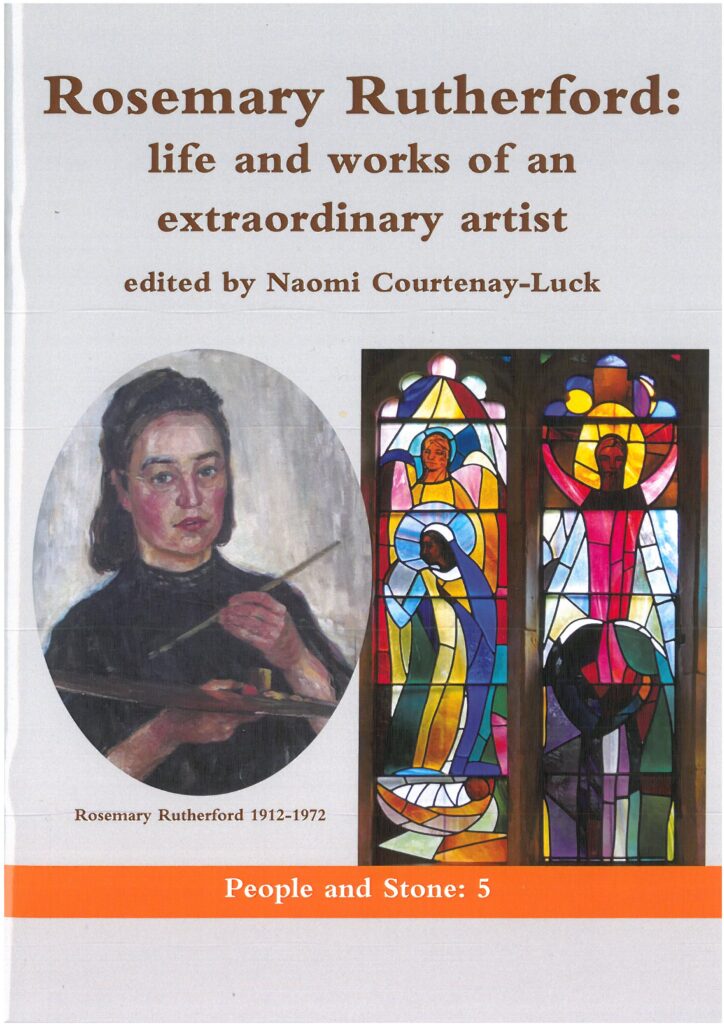
The Exhibition
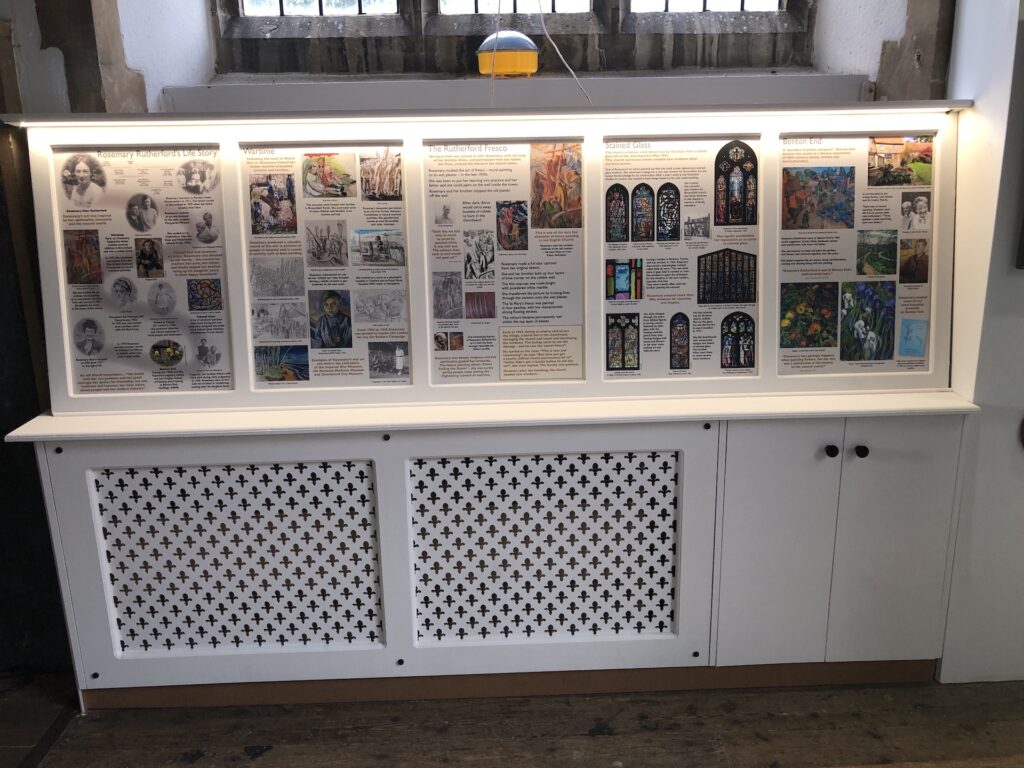
Five panels describe her life story and various aspects of her artistic works in words and pictures that gradually revealed themselves as research progressed.
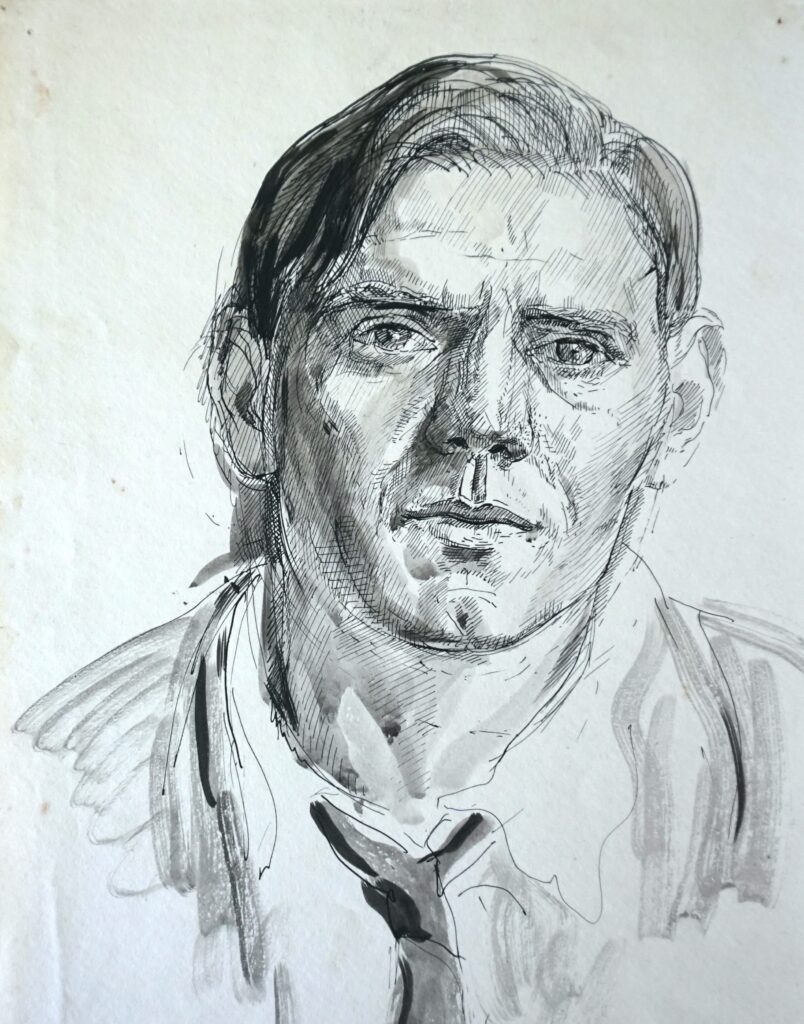
Examples of her artistic works have been carefully selected to show her remarkable skill in conveying the demeanour of the people she painted either in their facial expression or, more subtly, in their bodily stance with no facial features at all. This was especially the case in her war art when, as a civilian volunteer and later a VAD nurse, she captured so many elements of her experiences. She recorded scenes around Broomfield and then in various naval hospitals and finally the more colourful scenes when she was posted to Ceylon (now Sri Lanka).
Rosemary was deeply religious as well as being well versed in scripture as the vicar’s daughter. Much of her art expresses her deep feelings for the spiritual elements of the human condition together with her love and appreciation of the natural world.
The main focus of the Rutherford Project as a whole is the Fresco of Christ Stilling the Storm that Rosemary created, together with her brother, in 1941 when she was on leave from war service.
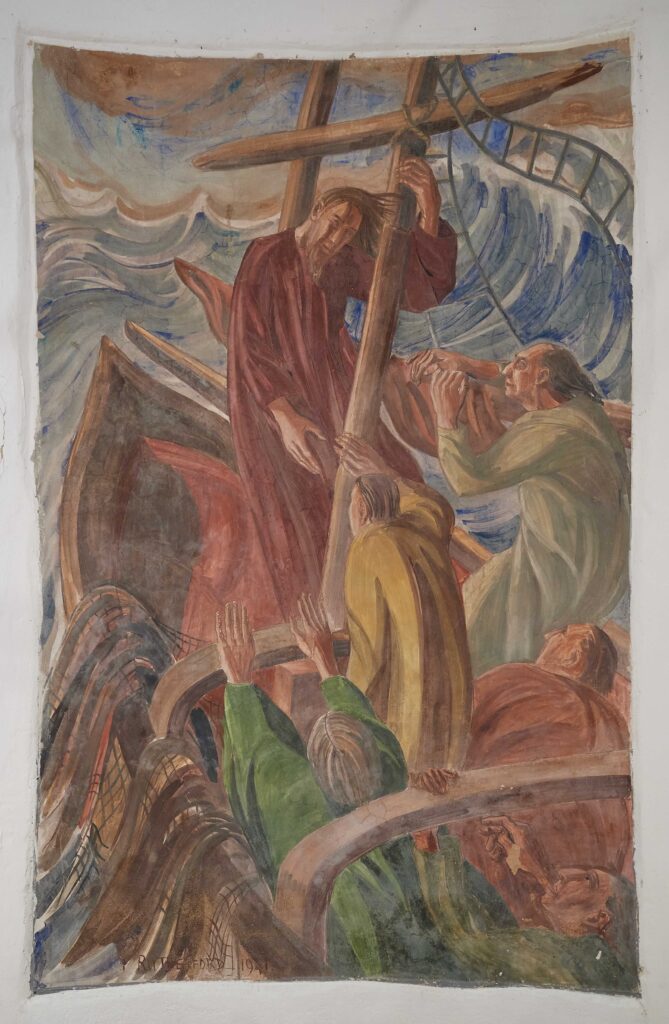
Part of her artistic studies had been to learn the art of true fresco in the style of the Italian masters and she was anxious to practise this method. Her father, as the vicar, was able to give her permission to work in the ringing chamber of the round tower. Due to the confined atmosphere of the thick-walled tower and her rigid adherence to the correct method, this work survives as the only true fresco of the 20th century in an English church. This and the most apposite subject for the time make it truly remarkable.
Her later works from her time spent at the East Anglian School of Painting and Drawing at Benton End near Hadleigh, Suffolk show the exuberance of her flower painting and the depths of her spirituality in the painting of religious subjects.
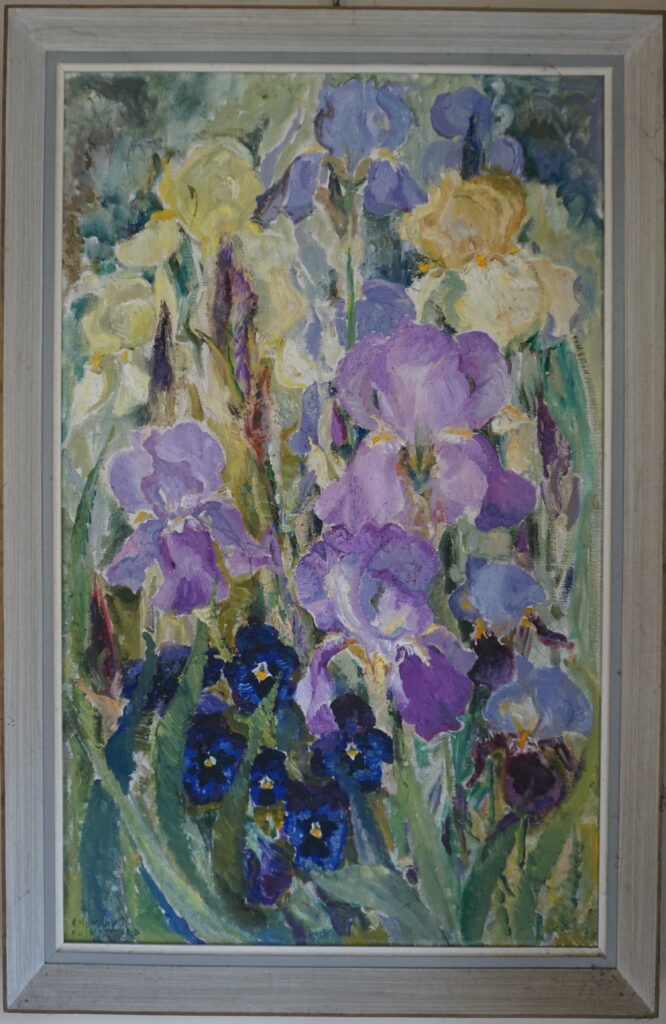
Iris with pansies at Benton End.
Rosemary is perhaps most widely known for her stained glass windows, mostly in churches, throughout East Anglia and further afield from Yorkshire to Sussex and even in New Zealand. The exhibition features a montage of many of her windows showing her versatility of style and subject. Her love of bright, bold colours is evident both in the east window of Broomfield church, in her earlier figurative designs and in the more abstract compositions at Boxford and in windows made posthumously to her designs at Hinderclay in Suffolk. Flowers feature prominently in some windows, notably several of the ‘lilies of the field’ and in her memorial window from Walsham le Willows which is shown as a backlit feature in the exhibition.
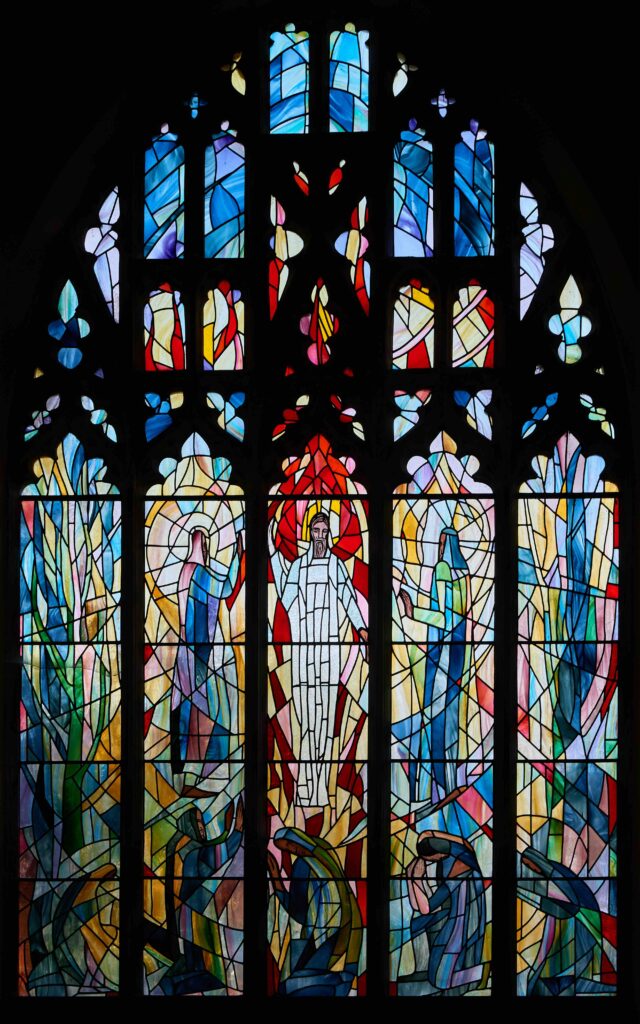
East window, Boxford: The Transfiguration.
Rosemary also explored the burgeoning technique of Dalle de Verre or slab glass, which lent itself to the enhancement of new churches being built in 1960s. The techniques used by Rosemary for the fresco and stained glass are revealed in table cases within the exhibition.
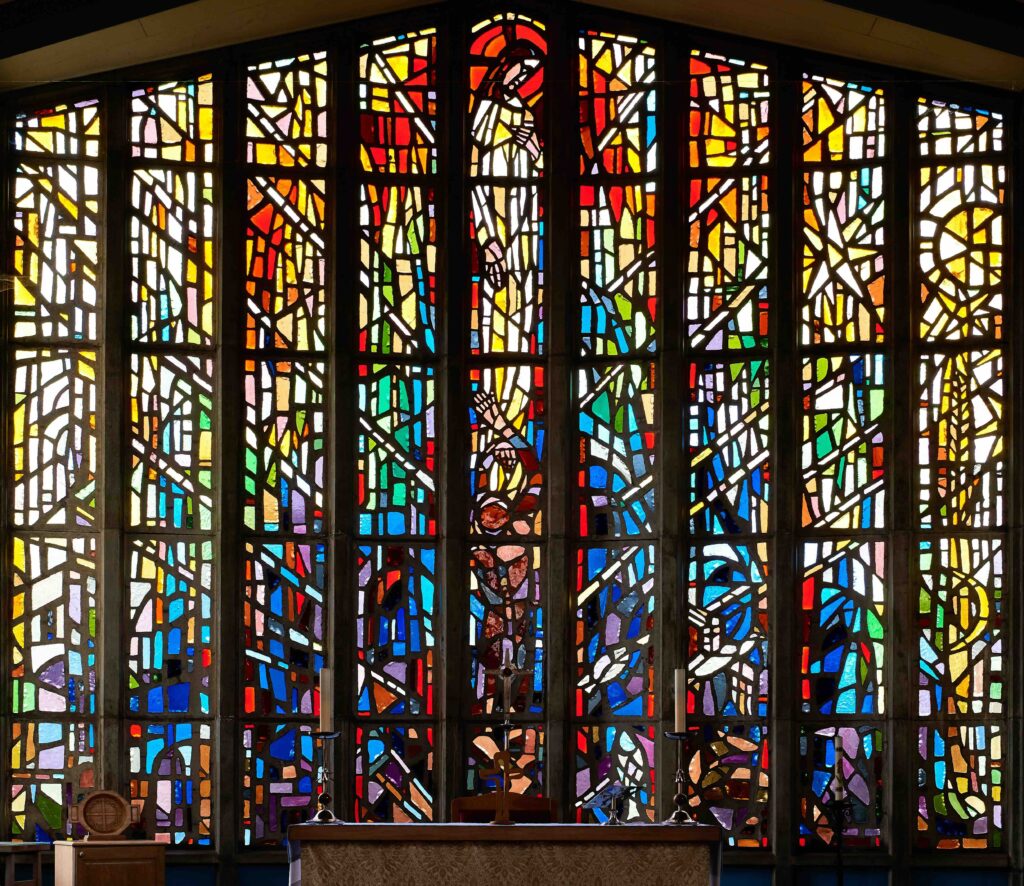
The huge and stunning dalle de verre east window, St Paul’s Clacton.
As well as reproductions of a sample of her artworks, the exhibition features an original painting of the damage sustained by the church when a bomb fell in the churchyard in 1943. The blast smashed the windows of the church which ultimately gave rise to Rosemary’s career in stained glass window making. Her original oils palette, featured in her self-portrait which is part of the title screen of the exhibition, is also displayed.
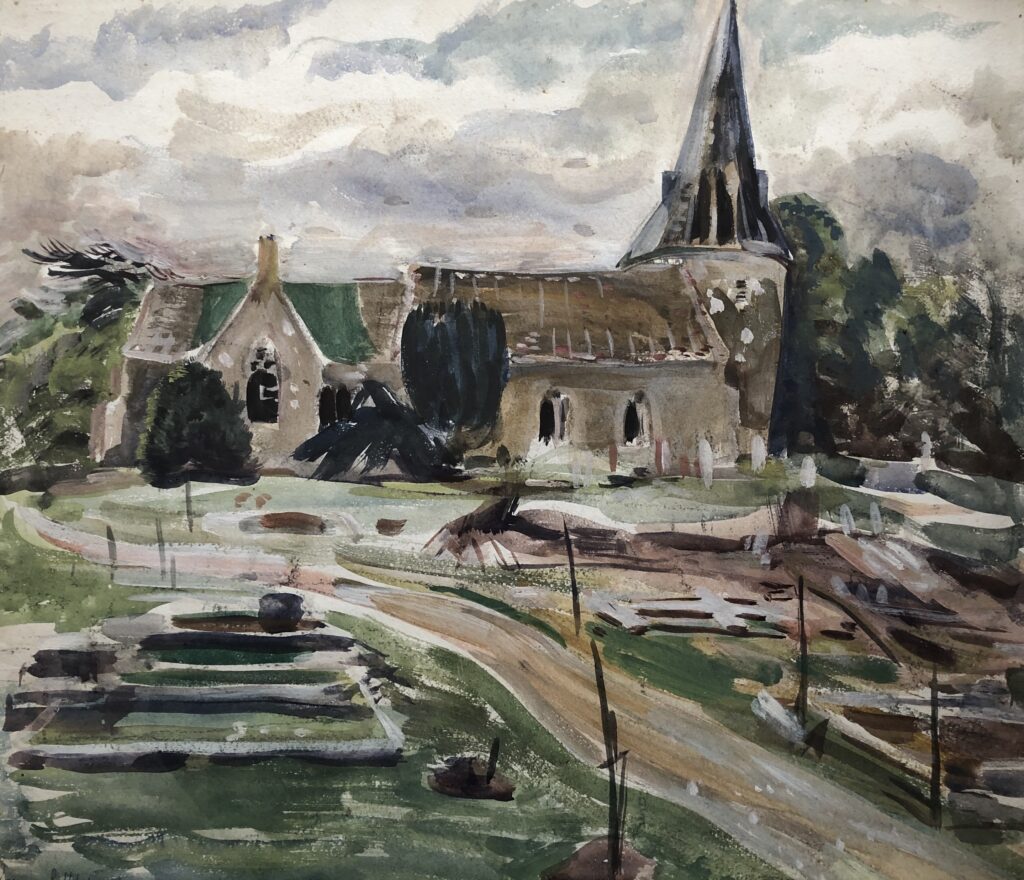
Rosemary’s painting of wartime bomb damage to St Mary’s.
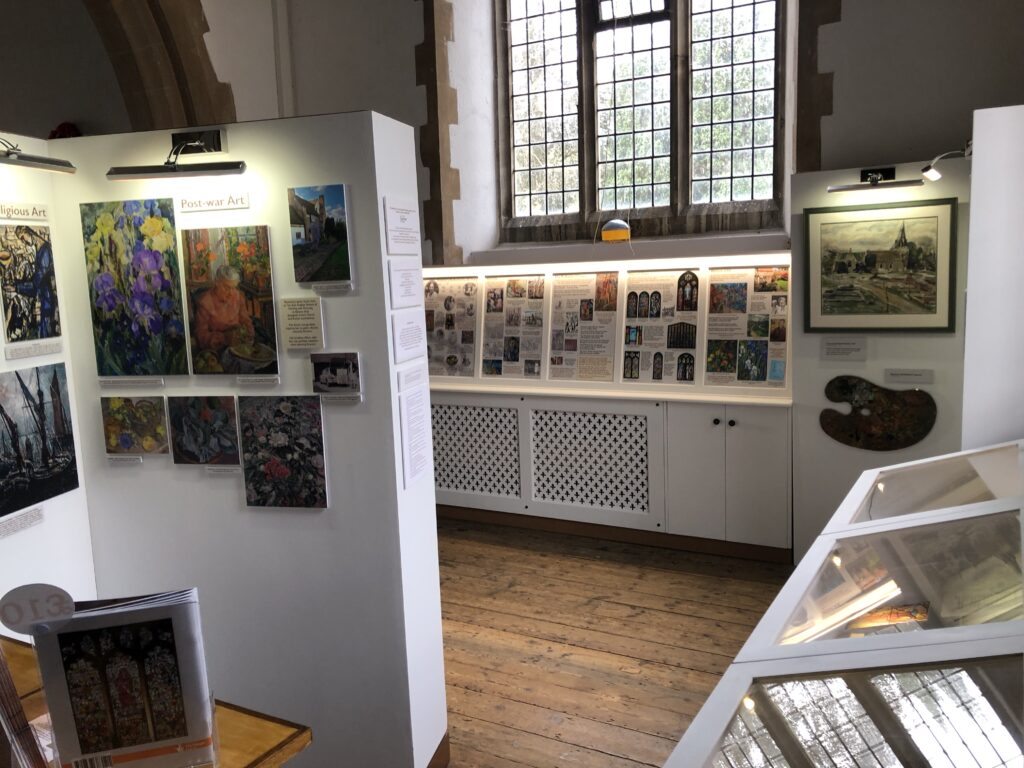
This permanent exhibition can be viewed during church opening times, currently Tuesdays and Thursdays 10:30 to 12:30 and after Sunday services.
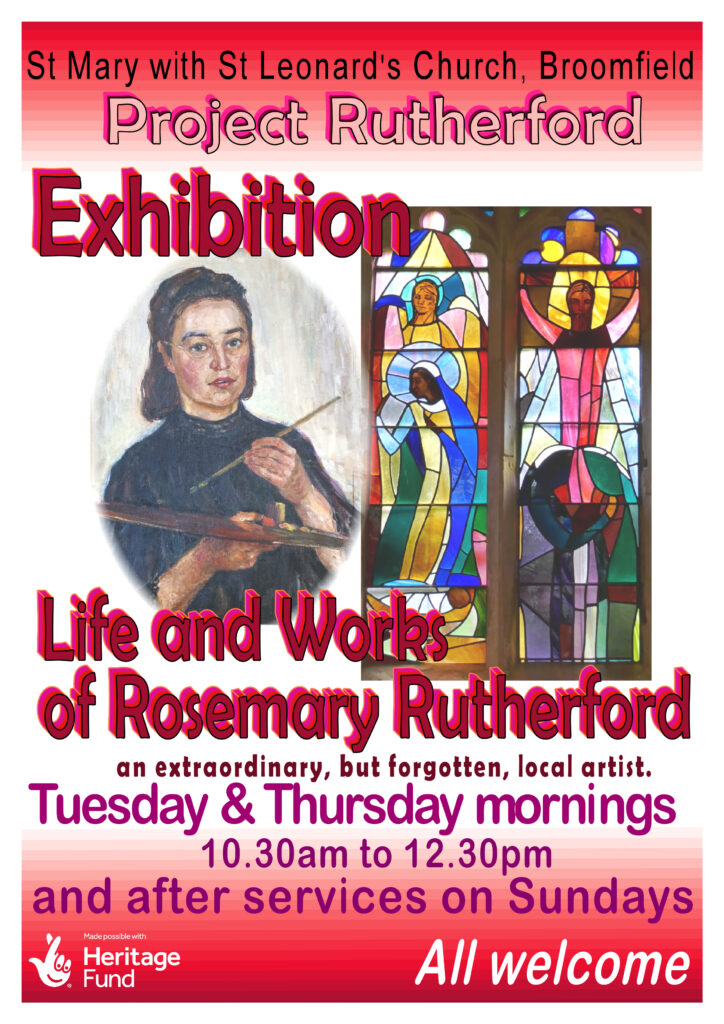
Exhibition team:
exhibition coordination and production – Ian Mercer;
exhibition furniture design and construction – Patrick Readings;
research, image acquisition, layout design and assembly – Ros Mercer;
research and Weston family archive images – Naomi Courtenay-Luck;
research and image acquisition – Kathy Rouse, Cathy Pearson;
text and image design and layout; image enhancement – Trevor Johnson;
electrical, lighting, installation, fitting and fixing – Jim Tibbott;
Project Rutherford liaison – Trudy Stevens.
St Mary’s PCC and the team wish to thank the following for sharing their knowledge and expertise:
Weston family – images, including artworks and family photographs (all are Weston Family Archive unless otherwise credited) with particular thanks to Naomi Courtenay-Luck for information, photography and family insight.
Donna Adkinson, Headteacher Greenwich Middle School – information and research.
Andrew J Begent – research information on Broomfield during World War II.
Billie Bond – fresco research and model.
Emma Boyd, Gainsborough’s House – research information on Benton End.
Robjn Cantus, Inexpensive Progress – research information on Rosemary Rutherford.
Dr Gill Clarke – information on women war artists, the Slade School of Art and research advice.
Dr Mark Curteis, Chelmsford City Museum – image permissions.
Ian Grutchfield, Director, Hadleigh Old School – help with memories of Benton End.
Molly Hilton – recollections of the Rutherford family.
Neil Jennings, Jennings Fine Art – research information, images and sponsorship.
Melvyn King, Colchester Art Society – advice and research information on Benton End.
Paul Knight, Director, Craftsman Glass Ltd., Tolleshunt Major – information, glass and lead came samples.
Leez Construction: Basille Miller and Karl Barker – advice and support; construction of panel unit.
David Lilly – information on dalle de verre; glass samples.
Dr Hannah Lyons, Assistant Curator of Art, National Maritime Museum – research information.
Rebecca Newell, Head of Art Imperial War Museum – help with research on art.
Stephen Noble, Archivist, British Red Cross – help with information on VADs and Records.
Beatrice Okoro, Images and Brand Licensing Officer Royal Museums Greenwich – information on use of images.
Kate O’Neill, Sound Archivist, Essex Record Office – provision of oral history recording.
Christopher Parkinson – photographs of stained-glass, fresco and information on glasswork.
Margaret Pinkerton – background information.
Reprohouse: Peter Castle – printing of all images and text.
Andrew Sim, Sim Fine Art – research information and images.
Lucy Skellorn, Jo and Dave Hull, Benton End House and Garden Trust – research information on Benton End.
Tobit Curteis and Sarah-Jane Fox, Tobit Curteis Associates, Cambridge – advice on fresco and images.
UCL Library Special Collections, Archives & Records Department – research information on the Slade School of Art records.
Annette Wickham, Royal Academy of Art – research on art.
